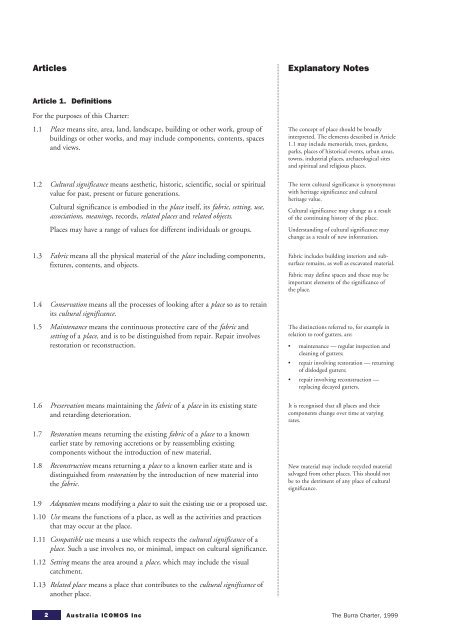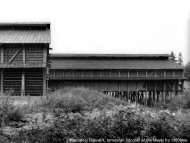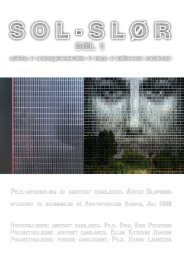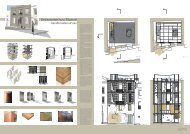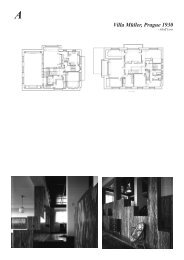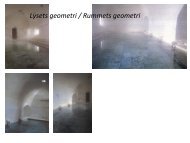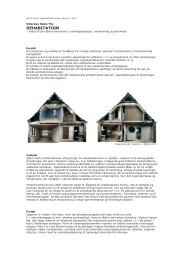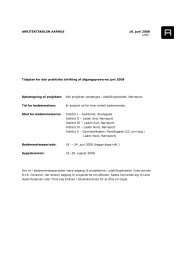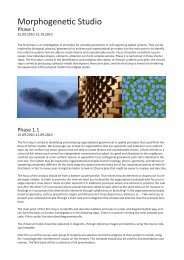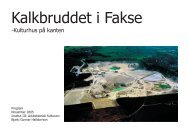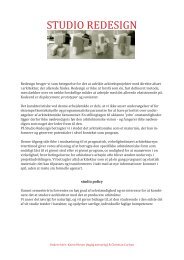The Australia ICOMOS Charter for Places of Cultural Significance 1 ...
The Australia ICOMOS Charter for Places of Cultural Significance 1 ...
The Australia ICOMOS Charter for Places of Cultural Significance 1 ...
Create successful ePaper yourself
Turn your PDF publications into a flip-book with our unique Google optimized e-Paper software.
Articles<br />
Explanatory Notes<br />
Article 1. Definitions<br />
For the purposes <strong>of</strong> this <strong>Charter</strong>:<br />
1.1 Place means site, area, land, landscape, building or other work, group <strong>of</strong><br />
buildings or other works, and may include components, contents, spaces<br />
and views.<br />
1.2 <strong>Cultural</strong> significance means aesthetic, historic, scientific, social or spiritual<br />
value <strong>for</strong> past, present or future generations.<br />
<strong>Cultural</strong> significance is embodied in the place itself, its fabric, setting, use,<br />
associations, meanings, records, related places and related objects.<br />
<strong>Places</strong> may have a range <strong>of</strong> values <strong>for</strong> different individuals or groups.<br />
1.3 Fabric means all the physical material <strong>of</strong> the place including components,<br />
fixtures, contents, and objects.<br />
1.4 Conservation means all the processes <strong>of</strong> looking after a place so as to retain<br />
its cultural significance.<br />
1.5 Maintenance means the continuous protective care <strong>of</strong> the fabric and<br />
setting <strong>of</strong> a place, and is to be distinguished from repair. Repair involves<br />
restoration or reconstruction.<br />
1.6 Preservation means maintaining the fabric <strong>of</strong> a place in its existing state<br />
and retarding deterioration.<br />
1.7 Restoration means returning the existing fabric <strong>of</strong> a place to a known<br />
earlier state by removing accretions or by reassembling existing<br />
components without the introduction <strong>of</strong> new material.<br />
1.8 Reconstruction means returning a place to a known earlier state and is<br />
distinguished from restoration by the introduction <strong>of</strong> new material into<br />
the fabric.<br />
<strong>The</strong> concept <strong>of</strong> place should be broadly<br />
interpreted. <strong>The</strong> elements described in Article<br />
1.1 may include memorials, trees, gardens,<br />
parks, places <strong>of</strong> historical events, urban areas,<br />
towns, industrial places, archaeological sites<br />
and spiritual and religious places.<br />
<strong>The</strong> term cultural significance is synonymous<br />
with heritage significance and cultural<br />
heritage value.<br />
<strong>Cultural</strong> significance may change as a result<br />
<strong>of</strong> the continuing history <strong>of</strong> the place.<br />
Understanding <strong>of</strong> cultural significance may<br />
change as a result <strong>of</strong> new in<strong>for</strong>mation.<br />
Fabric includes building interiors and subsurface<br />
remains, as well as excavated material.<br />
Fabric may define spaces and these may be<br />
important elements <strong>of</strong> the significance <strong>of</strong><br />
the place.<br />
<strong>The</strong> distinctions referred to, <strong>for</strong> example in<br />
relation to ro<strong>of</strong> gutters, are:<br />
• maintenance — regular inspection and<br />
cleaning <strong>of</strong> gutters;<br />
• repair involving restoration — returning<br />
<strong>of</strong> dislodged gutters;<br />
• repair involving reconstruction —<br />
replacing decayed gutters.<br />
It is recognised that all places and their<br />
components change over time at varying<br />
rates.<br />
New material may include recycled material<br />
salvaged from other places. This should not<br />
be to the detriment <strong>of</strong> any place <strong>of</strong> cultural<br />
significance.<br />
1 . 9 Adaptation means modifying a place to suit the existing use or a proposed use.<br />
1.10 Use means the functions <strong>of</strong> a place, as well as the activities and practices<br />
that may occur at the place.<br />
1.11 Compatible use means a use which respects the cultural significance <strong>of</strong> a<br />
place. Such a use involves no, or minimal, impact on cultural significance.<br />
1.12 Setting means the area around a place, which may include the visual<br />
catchment.<br />
1.13 Related place means a place that contributes to the cultural significance <strong>of</strong><br />
another place.<br />
2 <strong>Australia</strong> <strong>ICOMOS</strong> I n c <strong>The</strong> Burra <strong>Charter</strong>, 1999


